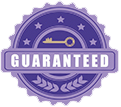How to Get a Mortgage: A Simple Step-by-Step Guide
Understand What a Mortgage Is
If you’re learning how to get a mortgage, start with the basics. A mortgage is a large loan used to buy a property. You borrow from a lender and repay the amount over a set period—usually with interest.
Understanding terms like interest rates, loan-to-value, repayment types, and mortgage terms gives you confidence when comparing different lenders and deals.
1. Check Your Finances First
Before applying, take a clear look at your financial position.Review your income, expenses, savings, and outstanding debts.
- Review your income, expenses, savings, and outstanding debts.
- Check your credit score, as this heavily influences what lenders will offer you.
The stronger your financial profile, the better your chances of securing a competitive mortgage deal.
2. Decide How Much You Can Afford
Working out your budget is a crucial part of learning how to get a mortgage.
- Consider how much you can afford to borrow and what monthly repayments you can comfortably manage.
- Don’t forget extra costs such as stamp duty, legal fees, survey costs, insurance, and moving expenses.
- Setting a realistic budget reduces financial stress later on.
3. Research Different Mortgage Types
There isn’t a one-size-fits-all mortgage. Explore options such as:
- Fixed-rate mortgages for stability
- Variable or tracker mortgages for potential flexibility
- Interest-only mortgages for lower monthly payments (but higher risks)
Each mortgage type has advantages depending on your income, long-term plans, and risk tolerance.
4. Get a Mortgage in Principle
A Mortgage in Principle (MIP) or Agreement in Principle shows how much a lender is likely to loan you based on your initial information.
This strengthens your position when making an offer, signalling to sellers and estate agents that you’re a serious, financially prepared buyer.
5. Compare Lenders and Deals
Never settle for the first mortgage you see. Compare:
- Interest rates
- Arrangement fees
- Early repayment charges
- Flexibility of terms
You can also use a mortgage broker to help you shop the market and identify deals that best fit your circumstances.
6. Prepare Your Documentation
To move smoothly through the mortgage application process, gather all necessary paperwork early.
This usually includes:
- Proof of income (payslips or tax returns)
- ID and proof of address
- Bank statements
- Details of debts, deposits, and commitments
Being organised helps prevent unnecessary delays.
7. Apply for Your Mortgage
Once you’ve chosen a lender, submit your application.
Be prepared for questions and requests for additional documents. Mortgage approval can take several weeks, so patience is essential.
8. Consider Additional Ongoing Costs
Remember that the mortgage isn’t your only financial commitment.
Factor in:
- Home insurance
- Utilities and maintenance
- Service charges (if applicable)
- Renovation or furnishing costs
Planning ahead keeps your finances healthy after you move in.
9. Seek Expert Advice If Needed
If the process feels overwhelming, professional support can make all the difference.
Mortgage advisers and brokers can explain complex terms, help you avoid common mistakes, and guide you toward the best deal for your situation.
Getting Your Mortgage Right
Understanding how to get a mortgage—and preparing each step carefully—can save you time, money, and stress. With the right knowledge and guidance, you’ll be ready to make confident decisions on your path to owning your new home.
Want help securing the right mortgage?
Review our London property for sale and contact our expert advisers for personalised guidance and a smoother, stress-free mortgage journey.
Posted on: 20 November 2025








